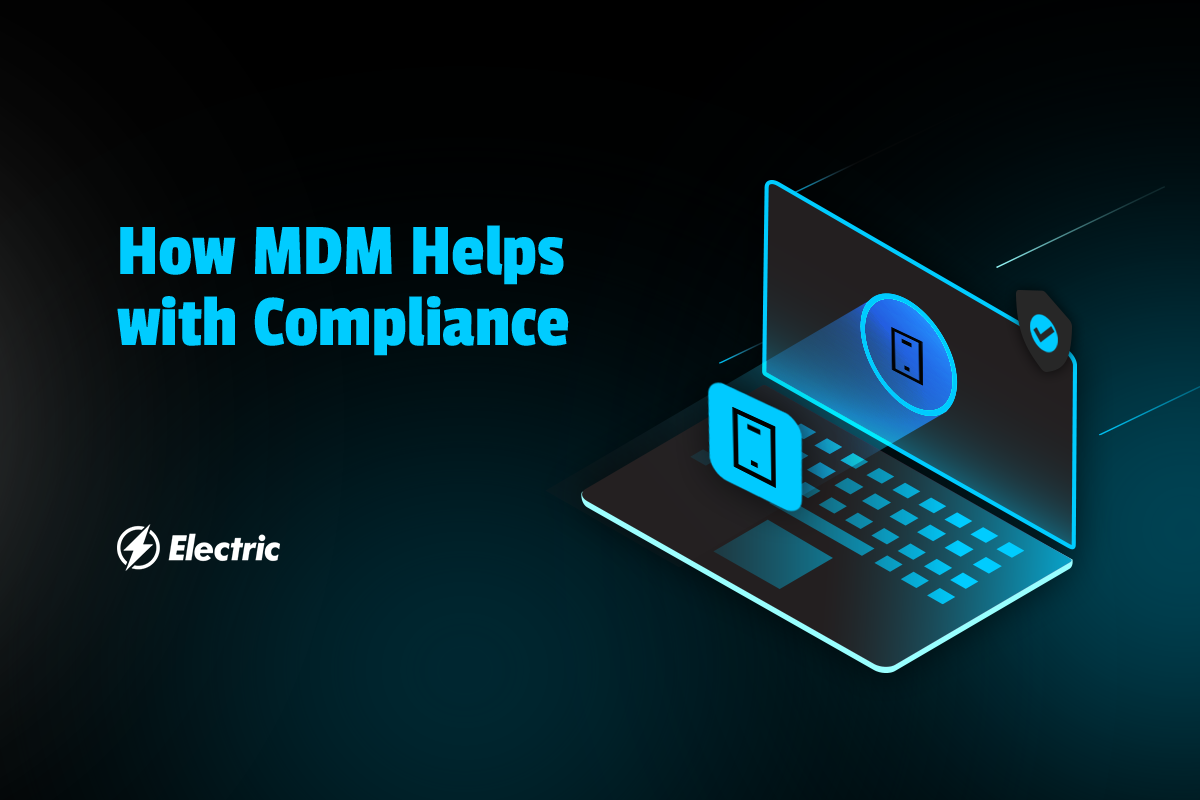
Today’s small and medium sized businesses have a greater need than ever to focus on mobile device management (MDM). In recent years, we’ve seen an accelerated uptake of employees working remotely and in hybrid environments, which in turn has encouraged businesses to adjust and improve their policies on the use of mobile devices.
Not only does an effective strategy in this space improve employee efficiency, MDM also helps with compliance in a workplace where employees are accessing sensitive data from multiple locations. The main objective of MDM is to improve the security and functionality of all mobile devices used in a business, which helps organizations meet their regulatory compliance obligations. Keep reading to learn more about mobile device management, the role it plays in compliance, and the best practices you should implement in your business.
What is MDM?
Mobile Device Management is a piece of software that supports the proper management of devices by a business’s employees by enforcing security policies on tablets, smartphones, and laptops. This technology is ideal for all small businesses since it allows you to remotely monitor, control and secure all data that employees have access to, and reduce your risk of cyber attacks.
So, What is the Role of MDM in Compliance?
Businesses have always had large amounts of essential data to protect, and a strong business interest in keeping their customer information secure. However, with the rise of data protection mandates such as General Data Protection Regulation (GDPR) and Know Your Customer (KYC), organizations also have a legal responsibility for ensuring all data is secure and safe.
Whether your business deals with B2B or B2C sales, the ability to meet all regulatory compliance requirements is crucial. Compliance with all of these laws can be challenging, especially if your business operates in multiple geographic locations that are subject to a variety of regulations. However, MDM is an extremely useful tool in simplifying any compliance issues.
Your MDM solution should help you comply with regulations to protect data by providing insights into how device apps are being used and what kind of data is being accessed. It should also help keep corporate and personal data separate and maintain accurate data audits.
Non-compliance can be an organization’s downfall. It has costly consequences, including lawsuits and fines, plummeting stock prices, loss of shares, and a damaged brand reputation. These punishments extend even to non-willful violations, hence the need for MDM.
How Does MDM in Compliance Work?
Mobile device software can function on-premises or in the cloud. Your IT team should be equipped to configure policies and manage all work-dedicated mobile devices remotely through your MDM software. All devices – whether company provided or BYOD – should be enrolled in your MDM software to facilitate configuration. This allows your business to control what happens on all work-related devices and ensure any usage of these devices meets compliance requirements.
This process typically works when the MDM server pushes a particular set of commands to be followed by the device through the Application Programming Interfaces (API). Although key to a company’s success, small businesses and organizations must balance the need to secure their company’s data with the employee’s right to privacy. IT administrators can use compliance policies or privacy settings to avoid overstepping on users’ privacy and prevent mistrust.
How MDM Helps with Compliance
Whether you are running a small business or a huge corporation, the use of MDM in compliance will provide you with undeniable benefits. Here are some reasons you need MDM.
Device Control for Simplified Management
With the current business environment dominated by the mobile-first or mobile-only approach, it can be challenging to monitor and control all work-dedicated devices in use and unify the devices for proper management. MDM gives you better options for managing all devices as the technology controls all data and monitors any security breach. Your IT team can apply configuration policies to the devices to keep all data in one place and enhance your management strategy.
Data Security
Without proper management of work mobile devices, a business is at risk of cyberattack. MDM helps protect your business data and devices from these attacks by taking charge of all security measures. This is particularly important considering remote devices can be more vulnerable to such attacks.
Security of corporate data and all devices is achieved by various restriction settings and configuration policies, such as passcodes and using specific apps that align with the business set standards. However, you must ensure your MDM system stays compliant with the rules and regulations provided when applying the remote control.
Reduced Business Costs and Increased Productivity
Mobile Device Management allows you to efficiently manage all devices from a remote location, which helps save time and money. Similarly, MDM usually does not require large investment plans or the hiring of an IT expert.
The use of MDM also offers an automated management option for multiple devices. This leads to more productivity as technology decreases human errors while increasing speed. Users also reduce time wastage by accessing all company data they need without calling or visiting an IT office.
3 MDM Best Practices for Regulatory Compliance
While it is crucial to protect the integrity of a business by monitoring and securing data through mobile devices, restrictions and prohibitions safeguarding the user’s privacy must be maintained. Follow these MDM best practices to stay compliant with regulatory requirements.
1. Apply Current MDM Technology
Keep your MDM system up to date with the latest developments and upgrades to find new and improved ways of supplementing current approaches. Aim to maintain compliance by adding new strategies regularly.
2. Maintain Data Audits and Governance
Frequently analyze and audit your business data to ensure efficiency and consistency in management and reduce the risks of regulatory compliance violations. Data governance helps you identify the data source, who benefits from it, and how and where it is needed.
3. Choose an Appropriate MDM Solution
The right MDM solution will align with the compliance requirements and policies of your business. Create an MDM policy that outlines your demands and expectations before implementation to avoid disappointment and improve functionality.
Use MDM to Achieve Compliance
Given the current trends and the percentage of businesses relying on mobile devices to deliver quality products and services, small businesses must leverage valuable data for efficiency and performance. MDM is essential in achieving this goal while also adhering to all regulatory compliance requirements. If you are exploring MDM implementation for your business, or an upgrade to an existing system, Electric is here to help.



